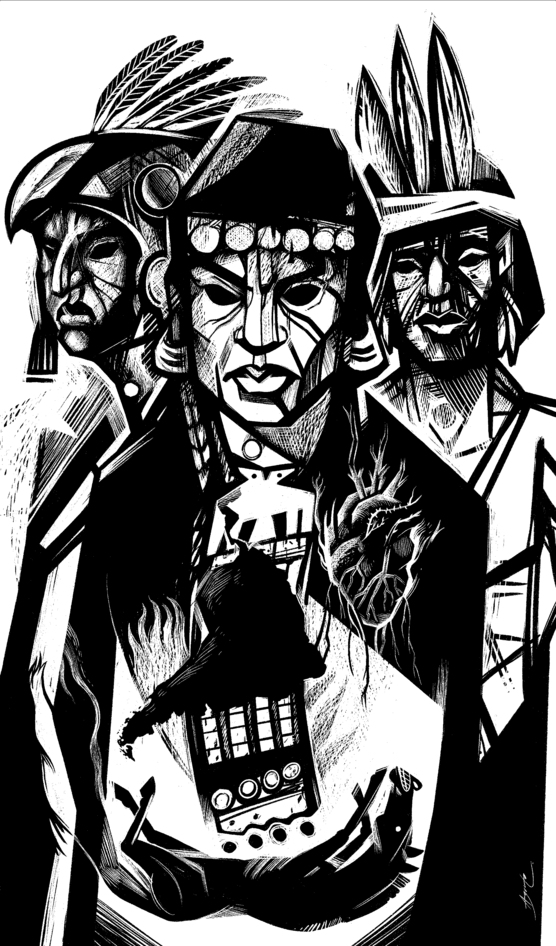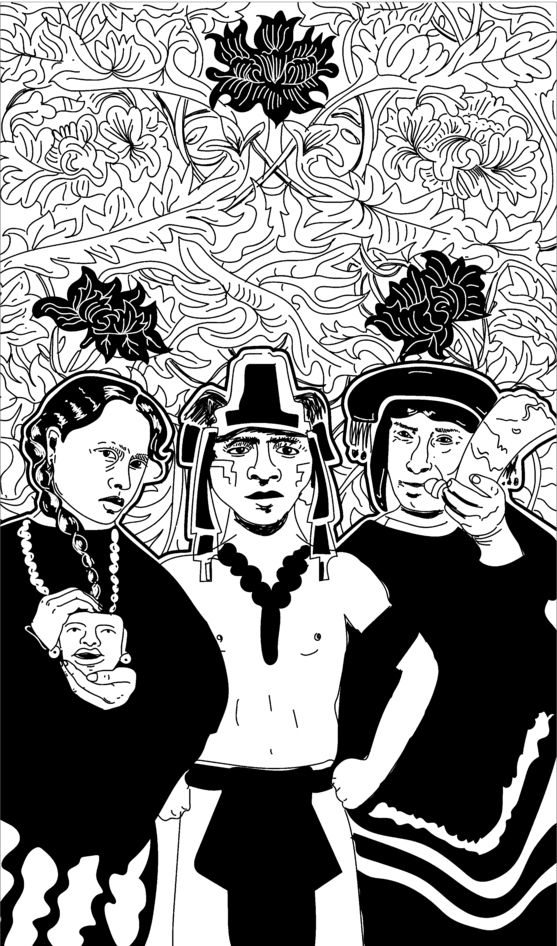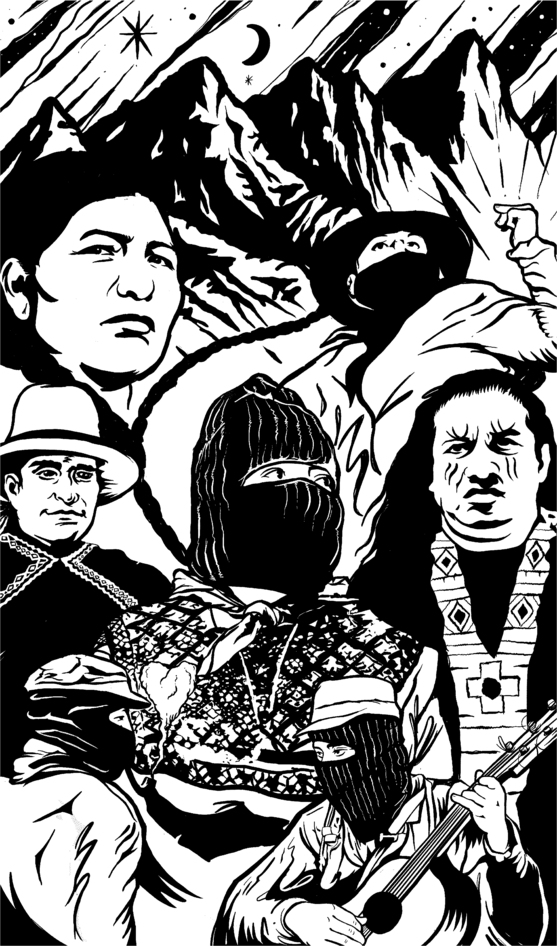
.
DEFENSE OF
TENOCHTITLAN MEX
MAPUCHE RESISTANCE CHI
BATTLE OF
MARACAPANA VEN
The Spanish colonization of Abya Yala was anything but easy. The invading forces had the advantage on the battlefield with gunpowder and horses, but the native peoples were willing to defend their dignity to their last breath. In Venezuela, indigenous leader Guaicaipuro and the Caribe people held the Spanish at bay for years, while Hernán Cortés suffered a near-fatal defeat at Tenochtitlán (now Mexico City). Although in most cases the indigenous peoples ended up defeated, resistance against foreign occupation never ceased, creating a tradition of struggle that would be revived again and again in the centuries that followed.

.
TUPAC AMARU II REBELLION PER
JACINTO CANEK UPRISING MEX
TUPAC
KATARI & BARTOLINA SISA UPRISING BOL
The Spanish empire imposed its rule on the continent, but was unable to subdue the peoples. The three centuries between the arrival of Columbus and the beginning of the independence struggles saw constant rebellions. Latin Americans fought against the brutal exploitation in the mines and plantations, against the suffocating taxes, or simply in defense of dignity and self-determination. In Yucatán (Mexico), Jacinto Canek led a Mayan insurrection against the Spanish crown, fighting the colonial and church advances that dispossessed the indigenous peoples and condemned them to slave labor. Further south, Tupac Katari and Tupac Amaru II led massive rebellions of thousands of men and women in present-day Bolivia and Peru, eventually establishing control over vast territories and threatening major cities. The revolts were brutally repressed, their leaders executed, but the cry of Tupac Amaru II would echo in time: I will return and I will be millions!

.
HUARAZ REBELLION PER
OCTOBER INSURRECTION ECU
ZAPATISTA ARMY OF NATIONAL LIBERATION MEX
The independence movements built on several centuries of slave and indigenous rebellions, but largely ended up replacing colonial administrations with liberal republics, although some of the emancipatory projects aspired to more. Tributes to the metropolis were scrapped, but the reality of deep inequality remained. One of the first signs that the new oligarchies would have no peace was the Huaraz rebellion against the reestablishment of the «indigenous tribute.» Latin American countries underwent great changes, such as the establishment of representative democracies, but the marginalization of native peoples remained a constant. Thus, by the end of the 20th century, new insurrections of indigenous peoples set the scene once more. The most significant and well-known case was the Zapatista Army of National Liberation (EZLN) uprising in Chiapas (Mexico), which took control of a territory that remains autonomous to this day.

.
LENCA DEFENSE OF THE ENVIRONMENT HON
MAPUCHE DIGNITY CHI
INDIGENOUS MINGA COL
The current crisis of capitalism, in both social and environmental terms, has brought new challenges for indigenous peoples. In Honduras, as in other countries, the struggle of the Lenca people has been costly, with state-sponsored violence raging on with impunity and terrible episodes such as the assassination of Berta Cáceres. At the same time, indigenous movements have demonstrated that their steadfastness and ability to mobilize can precipitate political change, as seen recently with the Indigenous Minga in Colombia. Despite an uncertain future and plenty of dangers ahead, the native peoples of Our America will play a fundamental role in the defense of peace and the Pachamama.








